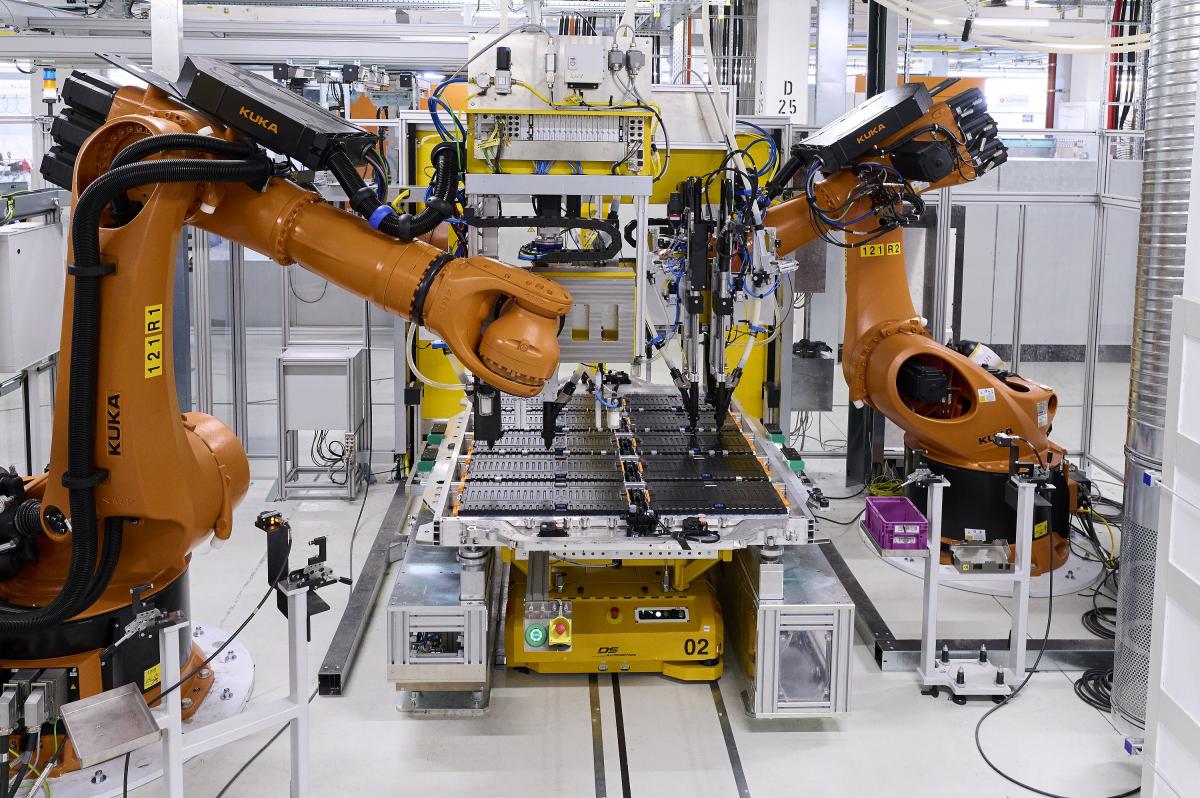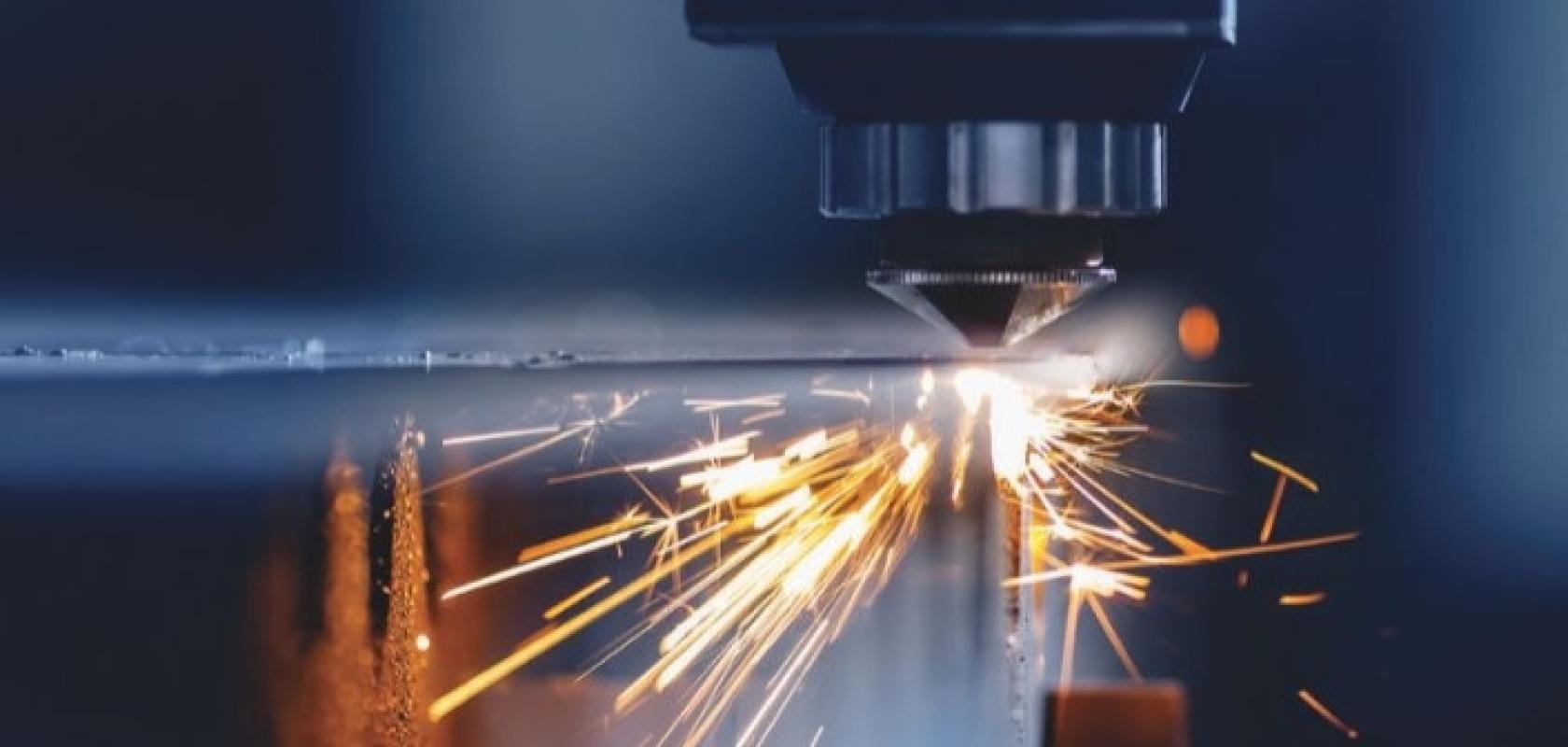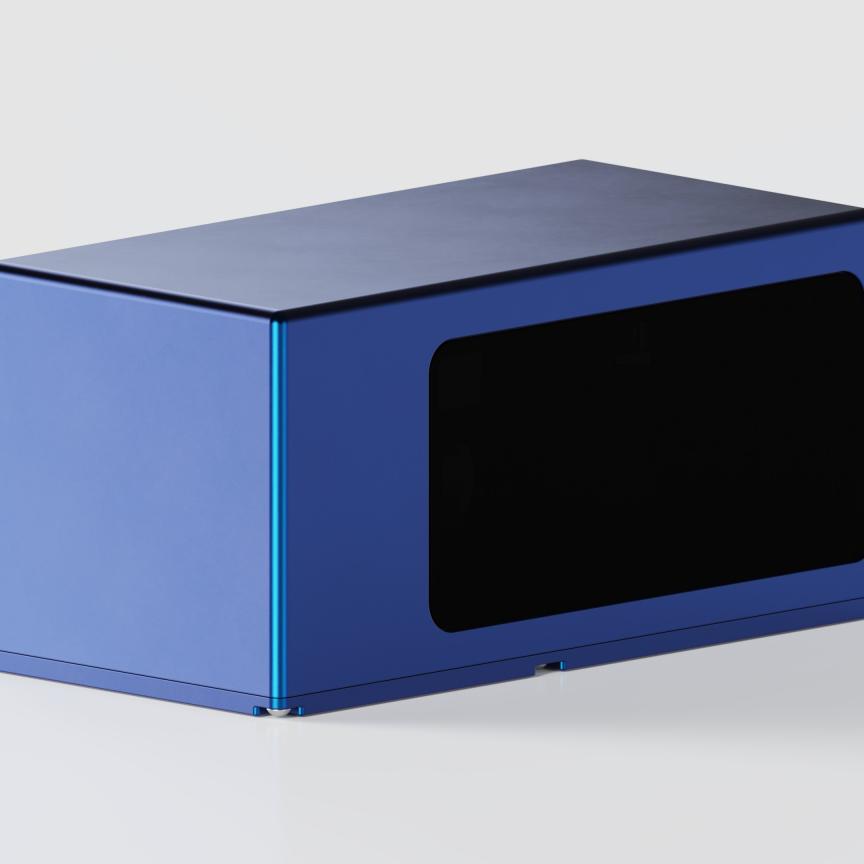Beam analysis has become increasingly sophisticated and is now a necessity for certain laser applications as faster and more powerful lasers require real-time feedback.
The technique is used to capture data about the profile of a laser beam, ensuring that a laser is behaving in the way that it is expected to behave.
There has been significant improvements in beam analysis in recent years, and as Nicholas Prefontaine, Product Manager at Gentec Electro-Optics, explains, this has enabled a new way of thinking: “The old school style of beam analysis was just basically a watt meter, and the new style is knowing everything about the laser parameters including focal point size, focal point quality, and propagation properties.”
This has not always translated into the acceptance and the adaptation of new laser measurement technology. Industry can often move slowly and fail to recognise the opportunities the technology can present, as John McCauley, Senior Business Development Manager at Ophir, points out: “It's amazing to hear of a customer who has bought this million dollar machine, and made that investment, but still wants to use 1970s and 1980s technology to measure the performance of the laser, I'm like ‘the technology is there, use the technology to get a better snapshot of how your laser is performing’.”
One area where beam analysis is having a big impact, however, is in additive manufacturing.
Real-time integration in a challenging environment
Additive manufacturing has been around for many years, but it has recently started to be considered as a practical means for production. For this to happen it requires timely measurements on how the laser is interacting with the process and requires the laser, or even sometimes multiple lasers, to work to increasingly demanding specifications, smaller spot sizers, and more power density.
“You need to be able to reproduce the environment in which the component was created, in production, in large volume, in different parts of the world, and on different machines,” Prefontaine explains. “It requires the laser to be well analysed and characterised both in R&D and in production. Even before R&D there's new simulation software that can simulate how a laser and its different parameters can affect a 3D print structure, all the various laser parameters have to be monitored and then reproduced to ensure your laser is responding according to your simulation.”
More clients require live feedback to ensure process quality and reduce downtime, reduce lost material and increase throughput to better utilise the machines that they have already put in place, Prefontaine adds. “The difference is, instead of making standalone detectors for laboratory or scientific use, or spot detection, we're seeing a lot of these detectors being integrated into their machines. Some are being integrated by the client end users, but some are being integrated by the laser machine manufacturers, so we're climbing up the chain in addressing the question of laser quality control earlier on in the design process.”
How the laser is interacting with the process can change over a short amount of time, with a laser having different characteristics when the laser is first turned on and just a few seconds later. As McCauley explains: “Historically, laser measurement products have given you a snapshot of what is happening at a brief moment in time. With additive manufacturing it is crucial to understand how that laser is performing over long periods of time, to understand how that laser performs over the entire lifetime of the laser, and how laser power changes between R&D application and production, and how that laser is changing over the production life of the laser.”
There are also challenges from the production environment and from the thermal effects of the laser system. The debris that comes off a process can often be harmful to the products that are taking the measurements. For example, if there's a protective window on the system to protect the laser from process debris, contamination on the window will absorb some of the laser light. McCauley comments: “If you have a flat mirror, when heat is added to that mirror you get a lensing effect; that window that's supposed to be 100% transmissive is now acting like a lens in changing the properties of that laser. Our measurement devices help the laser user understand whether they have some kind of change in the property of the laser, and if they do, how to try and minimise that as much as possible by performing maintenance on your laser system. These thermal effects cause the laser power density to change, and therefore the overall process changes.”
McCauley says that Ophir has been working on making products more friendly to harsh production environments. “We've been engineering products that are more practical to design and integrate into a system,” he says, rather than having a standalone measurement device.
Ophir has released four new products recently: the Industrial Power Meter, a high laser power measurement device that's designed to be integrated into a system and left for long periods of time; BeamWatch Integrated is a combined laser beam profiler and laser power measurement device that's designed to be integrated into a system; BeamWatch AM is specifically for measuring laser beam profile and laser power simultaneously in additive manufacturing systems; and BeamPeek, which is an all-in-one beam profiler and laser power measurement device.
There are also additional challenges that come from trying to measure very high energy density and very rapid lasers, as Prefontaine notes:“The power density that's used to cut the metal can also be used to cut our own apparatus, and so making stronger absorbers or dealing better with the power and heat that's generated by these utilities is a big problem.”
The holy grail of laser measurement
While there have been significant advances in beam analysis, there are nonetheless limitations and compromises that still have to be made in the measurements. There are two approaches to measuring a laser beam: working in-process, where you measure a laser’s performance in real time as the process happens; and an at-process measurement, where you measure where the process happens, but it's between parts. McCauley gives the pros and cons of each:“The in-process measurement is more of a real-time feedback as the process is happening, but the drawback is that in most cases it only measures part of the laser system. You cannot really take a measurement of the process while the process is happening, so it will paint an incomplete picture of how that laser is performing during the process. With at-process measurements you are capturing all of the laser characteristics at the process, but the drawback is it has to be done offline. It takes away from production time in order to collect those bits of information on the system.”
McCauley says the holy grail of laser measurement is to be able to measure the performance of the entire laser during the process in order to feed that back to the system. “That's something that is certainly on our mind,” he says. “It's something we're considering when we develop our products, but that's still one of the challenges that really needs to be overcome. Eventually we can come up, or somebody will come up with a system that can accomplish this. We're getting very close.”
Growing importance
While industry has not always been as enthusiastic as they could have been in the adoption of the latest beam analysis technology, there is an inevitability to its growing importance. As McCauley putS it: “Between five and ten years ago this was information that was 'nice to know'. It was nice to know what your power was doing during a process, it was interesting data to some people, but with the drive of industry 4.0, the internet of things, it's becoming more of a requirement. In some markets, for instance medical device manufacturing, it is a requirement, and it's even moving towards requiring a beam profile to see what the laser is doing at the process.”
A similar point about the technology becoming a requirement was made by Prefontaine: “Laser parameter measurement and control will become more demanding as quality and throughput have to increase, but also a lot of these parameters will be required… as industry standards become normalised, as is happening right now in additive manufacturing. Laser parameters are required to be mentioned to produce certain classes of parts, and these standards will only become more strict in the future. So clients that want to produce high quality parts for aerospace, medical, and maybe one day consumer products, will be required to be also laser measurement experts.”
While beam analysis will increasingly become a requirement in some areas of additive manufacturing, there is also the possibility for new unexpected and innovative applications. An example Prefontaine provides was the impact of beam analysis on anti-counterfeiting: “It's a little bit like cryptography where the various laser parameters produce a certain result, but from that result it's difficult to know what the laser parameters were. Very tightly controlling different laser parameters can result in a unique marking which can be part of an anti-counterfeiting scheme.”
As beam analysis begins to play an important part in existing applications, more innovative applications are sure to emerge in the future.
Sponsored: Safe laser welding in the production of batteries

The technology contributed to the optimisation of both the development of the BMW Group’s laser welding process as a whole and the quality of the manufactured modules
Automobile manufacturer counts on 100% inspection with Ophir BeamWatch Integrated systems
Battery modules are the beating heart of every electric car. They ensure mobility and security, and their reliability determines whether a vehicle is accepted or not. The BMW Group launched the i3, the first fully electric production vehicle, back in 2013 – so the company is well aware of the pitfalls of battery production, which grow in complexity with every uptick in capacity.
Up to 144 laser welds are required for contacting a 5th-generation battery module. Thanks to Ophir BeamWatch Integrated systems, the auto-maker can check the laser beam before manufacturing each new module, independent of cycle times and with success. Before, in order to confirm ideal weld-in depths, spot checks by means of micrographs were carried out on a weekly basis.
Cycle-time-neutral testing of the laser beam
Laser welding in the production of battery cells requires absolute precision. Regularly checking the key parameters of the laser beam before welding contributes significantly to the quality of the finished battery pack. From the very first discussion with the experts from the BMW Group, the focus was on how to do this as completely – and with as little impact on cycle time – as possible. Within the ongoing process, the key metrics to be captured were:
-
Focus diameter
-
Laser power
-
Focus position
-
Focus shift
The latter two are particularly crucial for single-mode lasers, but measuring them quickly proved difficult. The only method capable of this is non-contact measurement of the laser beam based on the principle of Rayleigh scattering – a technology developed by MKS and employed in the Ophir BeamWatch product family. The company designed the Ophir BeamWatch Integrated system specifically for automated manufacturing. This, combined beam profiler and power gauge, has various interfaces that permit direct implementation in industrial networks. For the experts in technology development at the BMW Group, this instrument came at exactly the right time.
Non-contact detection of focus shift
The first Ophir BeamWatch Integrated system was put into operation in 2019 as part of the prototyping and basic definition for the battery production line. An intensive test phase in technology development followed. It soon became clear that the device could ascertain all the required parameters. Moreover, the results quickly revealed that the thermal focus shift in the process had been underestimated. Measurements with BeamWatch Integrated showed a thermal focus shift in the millimetre range that the engineers had not expected; however, once the magnitude of this shift was known, adjustments could be made in the manufacturing process. For the auto-maker, this was an important step towards attaining a consistent weld depth for all contact welds. In the development phase, micrographs of the contact welds were used to determine the relationship between the focus shift and the weld depth. Based on this, and working in close cooperation with the Ophir experts, the team determined the limit values for the focus shift.
Diminished weld penetration depth due to weld spatter
Another finding that emerged from the investigations was about the optics of the single-mode fibre lasers used for contact welding. They are affected by spatters on the protective glass. The spatters made their mark not only in terms of focus shift but even more directly on the focus diameter. The effects of laser beam defocusing, for example, due to a smudged protective glass, could also be analysed through the measurements taken with the BeamWatch Integrated. Because of these deviations in the laser beam parameters, the team also checked the weld penetration depth of the respective weld seams. Although the seam looked completely flawless, the weld depth was clearly too shallow. It was concluded that measurement technology had to be integrated into the series production process – as only then can the quality of the contact welds be guaranteed over the long term.
Reproducible quality of the contact welds
Today, the Ophir BeamWatch Integrated system is built into all the automated production lines where BMW 5th-generation battery modules are made worldwide. During the loading and unloading process, the laser is briefly operated at full power to determine focus shift. Only after confirmation (IO signal) that the parameters of the laser beam correspond to specs does the welding begin.

The Ophir BeamWatch Integrated system was specifically designed for automated manufacturing
While production was still in the start-up phase, measurements were taken after each module. For series production at full capacity, however, the decision was made to measure the laser beam after every tenth module produced. Should the BeamWatch Integrated detect a deviation in one of the previously defined parameters, it displays a warning message. The operator responsible for the line then checks the protective glass of the laser and cleans or exchanges it, as necessary. Potential errors due to deviations of the laser beam’s caustic can thus be avoided from the outset. In addition to this proactive testing, all modules are subjected to an electrical function test after the welding process.
Essential tool for monitoring
The production of a battery module is a very complex process overall. The individual battery cells are stacked, pressed and placed into a frame. Then, all positive and negative poles must be welded in the cell contacting system – upwards of 15,000 spot welds per hour are performed in each system. The engineers of the technology team are certain that the quality of the manufactured modules depends in large part on the consistently high quality of the laser beam parameters. Ophir BeamWatch Integrated is an essential tool for monitoring the laser beam in the production of the battery modules. And the equipment operators in the production lines are convinced of this too. Overall, MKS measurement technology has contributed to the optimisation of both the development of the BMW Group's laser welding process as a whole and the quality of the manufactured modules.
The BMW Group
The BMW Group is the world's leading premium manufacturer of automobiles and motorcycles and also provides premium financial and mobility services. The BMW Group production network comprises over 30 production sites worldwide; the company has a global sales network in more than 140 countries. As of December 31, 2021, the BMW Group had a workforce of 118,909 employees.


